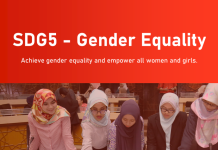By Dr Majid Khan (Melbourne):
Australia’s economic landscape has long been celebrated for its resilience and steady expansion. However, the distinction between economic growth and economic development remains critical, as GDP growth alone does not fully encapsulate national prosperity. True progress is measured not only by rising economic output but also by improvements in living standards, social equity, and environmental sustainability.
A Shifting Economic Landscape
In 2024, Australia’s economy exhibited modest growth, with GDP increasing by 0.3% in the September quarter, marking the twelfth consecutive quarter of expansion. However, annual growth stood at just 0.8%, the lowest since 2020, while GDP per capita declined by 0.3%—continuing a seven-quarter trend of contraction. This decline raises concerns about whether economic expansion is translating into meaningful benefits for Australians.
Government spending played a significant role in supporting economic activity, contributing 0.6 percentage points to GDP, primarily through increased investments in infrastructure and defense. While such investment boosts short-term economic activity, long-term reliance on public expenditure is unsustainable. A stronger private sector role is crucial for future growth and innovation.
The Household Perspective: A Growing Divide
Despite Australia’s overall economic expansion, many households are not feeling the benefits. Household consumption remained stagnant, with no contribution to GDP growth in the recent quarter. While disposable incomes rose by 1.5% and the household savings ratio increased to 3.2%, consumers remained cautious amid high mortgage rates and persistent cost-of-living pressures.
The reality is that while headline economic indicators suggest stability, deeper issues of inequality and affordability persist. Regional disparities remain significant, with urban centers benefiting from economic expansion while rural areas struggle with limited job opportunities and weaker access to services. Addressing these imbalances requires targeted policy interventions that ensure growth reaches all Australians, rather than concentrating prosperity in select regions.
Inflation and Monetary Policy
Inflationary pressures have eased, with the Consumer Price Index (CPI) rising by just 0.2% in the September quarter and 2.8% annually—the lowest since early 2021. Goods inflation fell to 1.4%, largely due to declines in electricity and fuel prices. However, services inflation remained high at 4.6%, driven by increasing costs in rent, insurance, and healthcare.
The Reserve Bank of Australia (RBA) maintained the cash rate at 4.35%, taking a cautious approach given persistent core inflation of 3.5%. Market expectations lean towards potential interest rate cuts in the near future, particularly if economic growth continues to underperform. The balance between controlling inflation and supporting economic expansion will be key to shaping household financial confidence and business investment trends in the coming months.
Trade and External Challenges
Australia’s trade sector presents a mixed picture. While goods exports increased by 0.9%, services exports—especially education-related travel—declined by 3.6%. This is concerning given the sector’s significant contribution to the economy and underscores the need for a diversified trade strategy that moves beyond dependence on resource exports.
Global uncertainties, particularly China’s economic slowdown, continue to impact Australian trade. As a major trading partner, China’s economic health directly influences Australian exports, particularly in commodities. Geopolitical tensions and shifting global demand patterns further emphasize the need for Australia to develop new trade relationships and explore alternative economic opportunities in sectors such as technology, clean energy, and advanced manufacturing.
Productivity and the Workforce
One of the most pressing concerns for Australia’s long-term economic development is stagnating labor productivity. The 2023-24 financial year recorded zero productivity growth, posing challenges for wage increases and global competitiveness. Productivity stagnation signals a broader issue of economic efficiency and innovation.
Addressing this issue requires greater investment in workforce skills, research, and technological advancements. Australia must foster an environment that encourages entrepreneurship and supports industries transitioning to higher-value activities. Strengthening vocational education, expanding digital literacy, and incentivizing private sector-led research and development will be essential to drive future productivity gains.
Environmental and Social Considerations
Economic progress must extend beyond financial metrics to consider sustainability and social well-being. Australia remains heavily dependent on fossil fuels, ranking among the world’s largest exporters of coal and natural gas. Despite growing climate concerns and a commitment to achieving net-zero emissions by 2050, progress in transitioning to renewable energy remains slow.
The renewable energy sector currently accounts for only 29% of total energy consumption, despite Australia’s vast potential for solar and wind energy. Greater investment in clean energy infrastructure, regulatory incentives, and government-backed policies are necessary to accelerate the transition to a low-carbon economy. This shift is critical not only for environmental sustainability but also for positioning Australia as a leader in the global green energy market.
Social inequality remains another key challenge. Indigenous Australians, lower-income groups, and rural populations continue to experience economic disadvantages. For example, the unemployment rate among Indigenous Australians remains significantly higher than the national average. Addressing these disparities requires targeted social programs, improved access to quality education and healthcare, and employment initiatives designed to create inclusive economic opportunities.
The Road Ahead: Balancing Growth and Development
Australia must strike a delicate balance between maintaining economic growth and fostering comprehensive development. Relying solely on GDP expansion is insufficient; a broader vision that includes social, environmental, and economic sustainability is necessary for long-term prosperity.
Diversifying the Economy
Heavy reliance on mining exports leaves Australia vulnerable to commodity price fluctuations. Economic diversification is critical to resilience. Sectors such as technology, healthcare, and green energy present high-growth opportunities that can reduce dependency on resource-based industries.
Investing in Human Capital
Education and workforce development are fundamental to economic competitiveness. Expanding access to higher education, strengthening vocational training programs, and promoting innovation-driven industries will help future-proof the workforce.
Strengthening Sustainability Efforts
A more aggressive push towards renewable energy is necessary to reduce emissions and align with international climate targets. Investing in clean energy projects and implementing carbon pricing mechanisms can create jobs while ensuring long-term environmental stability.
Reducing Social Inequalities
Economic development must be inclusive. Addressing income disparities, ensuring fair access to housing and healthcare, and supporting marginalized communities will contribute to a more equitable society. Government policies should focus on regional development and improving social mobility for disadvantaged groups.
Conclusion
Australia stands at a pivotal economic crossroads. While the country’s economic growth remains intact, deeper structural issues—including stagnating productivity, regional inequality, and environmental sustainability—demand urgent attention.
A more balanced approach that prioritizes both quantitative expansion and qualitative improvements in living standards, innovation, and sustainability is necessary. By fostering a diversified, resilient, and inclusive economy, Australia can ensure long-term prosperity that benefits all citizens, not just a select few. The future depends on proactive policymaking, strategic investments, and a commitment to sustainable development that extends beyond short-term economic gains.






